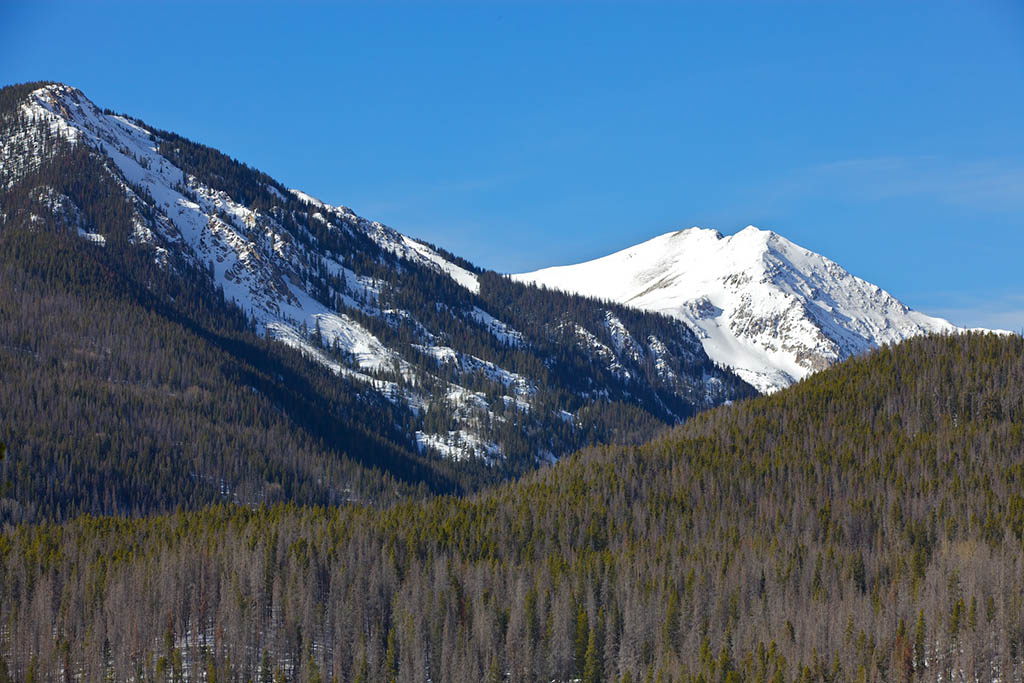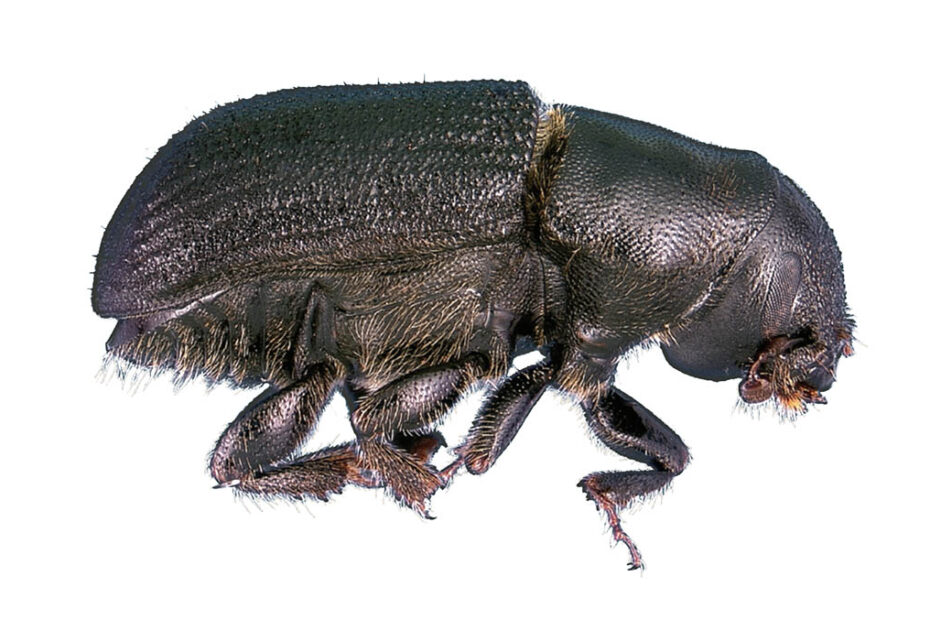Mountain pine beetle (MPB) (Dendroctonus ponderosae) outbreaks have dramatically reshaped forests across western North America. While much of the attention focuses on the beetle’s effects on pines such as lodgepole and ponderosa, these large-scale forest changes also have implications for aquatic ecosystems. Salmonids, including native trout and salmon, depend on cold, clean, and stable water conditions that can be influenced by shifts in forest cover and hydrology. The following sections summarize how MPB-driven tree mortality can affect streamflow patterns, water temperature, sediment levels, nutrient cycling, and ultimately the well-being of salmonid populations.
Altered Hydrologic Regimes
When MPB infestations kill large swaths of pine trees, there is a decrease in overall canopy cover and a drop in transpiration, since dead or dying trees are no longer drawing water from the soil. This reduction in water use often leads to more snow accumulating beneath beetle-killed stands, and that snow can melt earlier because of increased sunlight hitting the ground and darker litter on the snow’s surface. Such changes may shift peak runoff to earlier in the season and leave lower flows by midsummer or early fall, a period critical for fish migration and rearing. Although there can be a net increase in total runoff—due in part to less water usage by the forest—the earlier arrival of that water and the potential for drier late-summer conditions can challenge fish that need steady flows throughout their life cycles.
Water Temperature Changes After Mountain Pine Beetle Infestation
Loss of forest canopy, particularly in headwater or riparian zones, can permit more direct sunlight to reach streams. In addition, the earlier snowmelt can accelerate the timing of peak flows, causing stream temperatures to warm sooner in the spring. Salmonids such as cutthroat trout and bull trout are sensitive to subtle changes in temperature because they rely on cold water for spawning, egg development, and juvenile growth. Reduced overhead shade and earlier seasonal warming may limit cold-water refuges and place added stress on these populations as the year progresses.
Sedimentation and Channel Stability
As MPB-killed trees progress from red phase (still bearing dead needles) to gray phase (needleless and shedding branches), root systems eventually decay. This gradual decay can reduce soil and slope stability, increasing the likelihood of erosion or mass-wasting events in steep terrain. Additional sediment in streams can degrade spawning gravels and smother eggs, while also reducing habitat complexity for invertebrates—an essential food source for fish. At the same time, beetle-killed trees that fall into streams might initially increase beneficial woody debris, creating pools and shelter. Over the long term, however, widespread mortality can reduce the potential for future large wood inputs if new stands are slow to establish.

Nutrient Cycling and Water Quality
The shift from healthy green canopies to red phase and eventually to gray phase can alter the nutrient balance in forest soils and, by extension, in stream ecosystems. Needles dropping from infested trees provide organic material, potentially increasing dissolved organic carbon and other nutrients in nearby waterways. While some nutrient enrichment can boost the productivity of algae and macroinvertebrates, sudden or excessive loads can disrupt established food webs and water chemistry, impacting salmonids. Increased light penetration through thinning canopies can further amplify these changes by enhancing algal growth on streambeds, which is beneficial in moderation but can be harmful if it becomes excessive.
Species-Specific and Regional Considerations
Different salmonid species respond in various ways to altered hydrology, temperatures, and sediment levels. Westslope and Colorado River cutthroat trout, for instance, often occupy small headwater streams where even slight changes in flow or temperature can threaten spawning success. Bull trout, which require extremely cold water to spawn, may also suffer if summer temperatures rise and sedimentation increases. Pacific salmon and steelhead in regions experiencing MPB outbreaks could contend with altered migration cues if streamflow peaks shift earlier in the year. Because beetle impacts are often patchy and interspersed with healthier forest areas, the severity of these effects can vary widely across the landscape.
Longer-Term Outlook on Mountain Pine Beetles
In the long run, new forest growth and reforestation efforts will shape future watershed conditions. As succession proceeds, younger trees will eventually restore some aspects of the historic forest structure, potentially stabilizing hydrology and sediment supply. However, climate change could compound or accelerate some MPB-related impacts by creating warmer, drier conditions that stress both forests and fish. While research specifically linking MPB-induced forest mortality to salmonid population declines remains limited, it is clear that large-scale changes to forest cover and timing of runoff can profoundly affect cold-water fish. More intensive, long-term studies will be crucial for understanding how these insects’ effects on forests may ripple through watersheds and influence salmonid resilience.
Sources
Pugh, E.T. and Small, E.E. (2012), The impact of pine beetle infestation on snow accumulation and melt in the headwaters of the Colorado River. Ecohydrology 5: 467-477. doi: 10.1002/eco.239
Gibson, K., Kegley, S., & Bentz, B. (2009). Mountain pine beetle (Forest Insect & Disease Leaflet 2). U.S. Department of Agriculture, Forest Service.
Leatherman, D. A., Aguayo, I., & Mehall, T. M. (2011). Mountain pine beetle (Fact Sheet No. 5.528; Insect Series – Trees and Shrubs). Colorado State University Extension.
